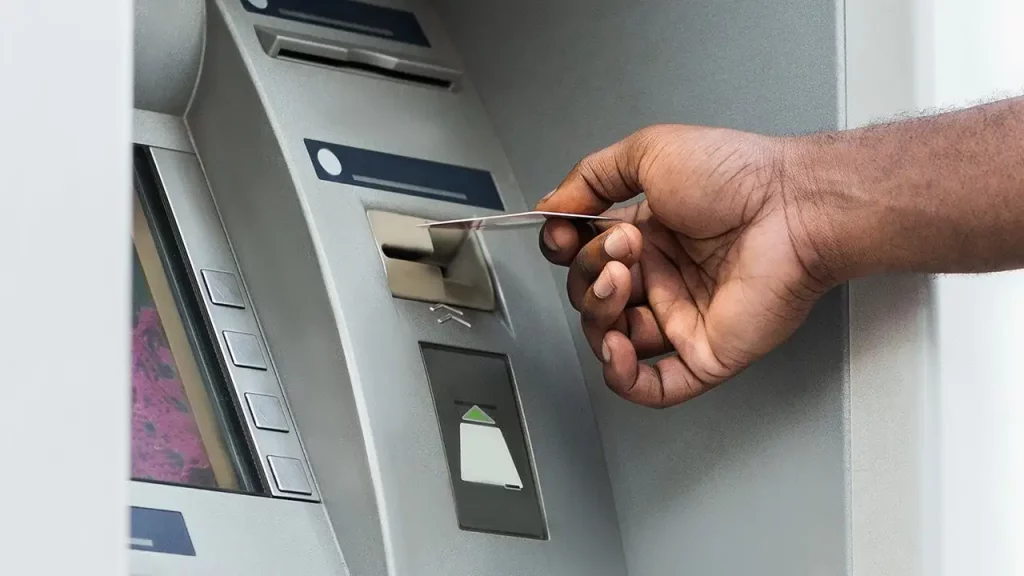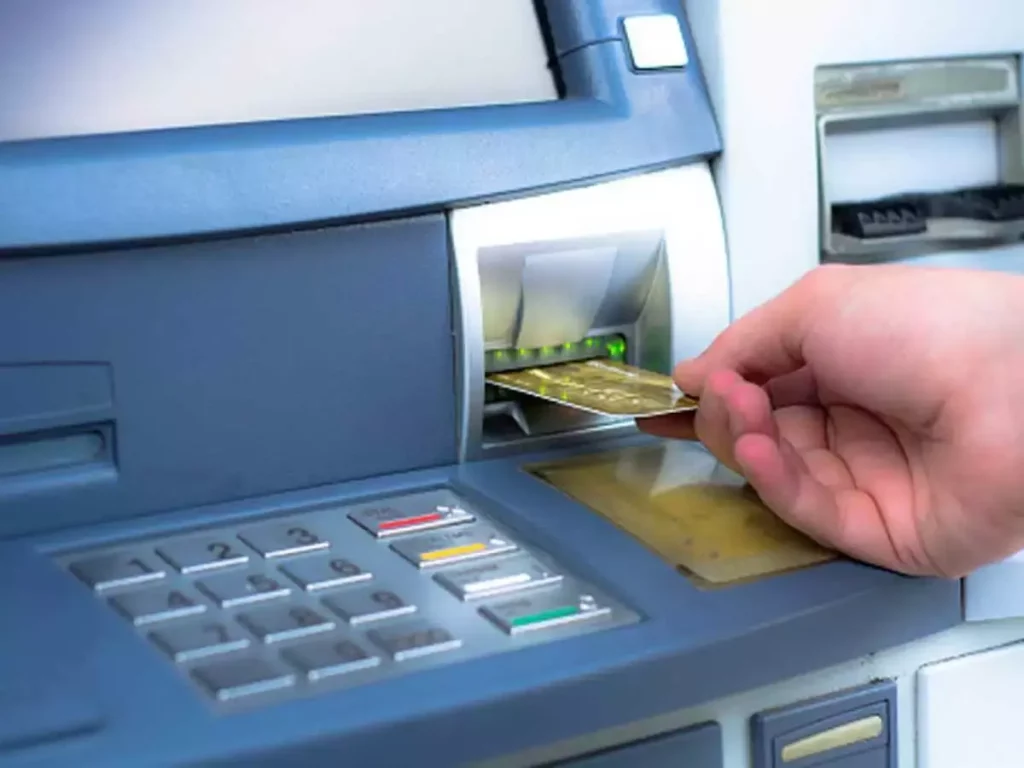In the present era, ATMs (Automated Teller Machines) have become an essential part of our daily lives. They have transformed our way of living, shopping, and other money-related activities including business deals. People feel it unsafe to carry more money rather they withdraw money, check their account balance, and perform other banking transactions when needed without the panic of being robbed. People no longer have to stand in long waiting lines at banks or wait for banking hours to access their accounts. ATM security services have become crucial as they have undergone significant changes and advancements for making them even more appropriate and efficient. This allows them to access their money at any time of the day or night.
ATM technology has geared up with many latest techniques to make it more encrypted like the introduction of biometric authentication. It allows users to access their accounts using facial recognition or fingerprint technology, making the method even more secure and appropriate. ATMs have also become more flexible, allowing users to execute a wide range of transactions such as fund transfers, bill payments, and deposits. A security bank branch near me now displays personalized greetings and offers customized banking options. ATMs continue to play a critical role in banking. With every ease, there come some issues that need to be evaluated and dealt with relative to security measures; the same goes for ATM security services.
Biggest Threats to ATM Security in 2023
Automated Teller Machines (ATMs) have been a useful way to withdraw cash for years. But, the increasing number of ATM scams and thefts poses a stern threat to the security of this technology. Offenders are constantly developing new methods to steal money from ATMs, and it is vital that people, financial institutions, and ATM creators take action to prevent these bouts. Here is the list of the biggest threats to ATM Security Services:
- Skimming Devices
Skimming devices have appeared as one of the biggest threats to ATM security in recent years. Skimming devices are minor, often hard-to-detect devices that offenders attach to ATM machines for stealing customers’ debit card information. ATM security services are needed to manage the concerns with great accuracy.
What are skimming devices?
Skimming devices are small, transportable devices that are intended to capture customers’ debit card information when someone uses an ATM. They are often attached to the ATM machine, or to the ATM’s card reader slot for vulnerabilities. They are typically made of metal or plastic and are designed to look like authentic card readers thus causing a great risk to ATM security.
When a customer attaches their debit card to the skimming device, the device reads the information stowed on the magnetic strip on the card back. This information can include the PIN, the customer’s account number, and other sensitive information. The skimming device then gathers this information on a small memory card, which the cybercriminal can later retrieve.
How are skimming devices installed?
A security bank branch near me evaluates the risks related to skimming devices and usually make appropriate measures. Criminals usually install skimming devices in one of two ways. The first method is to allocate the device directly to the ATM machine. This can be done by using screws, adhesives, or other means to attach the skimming device to the ATM’s card reader slot. Another method is to install a skimming device exclusive to the ATM machine itself. Criminals can do this by retrieving the internal components of the ATM, usually by using a special key or another tool. Once the skimming device is inside the ATM, the criminal can capture customers’ debit card information when the machine is used.

How can skimming devices be detected?
Skimming devices can be hard to detect, but there are a few clues that consumers can look for. The first clue is a card reader that looks changed from the rest of the ATM opens up to ATM security concerns. Skimming devices are often made of metal or plastic, and may have a marginally different shape or color than the genuine card reader.
Banks should also be on the lookout for ATM security services from the best security bank branch near me that evaluates and check the ATM machines for devices attached to the card reader slot on the ATM. Moreover, customers should always shield their hands when entering their PIN on an ATM machine. Criminals can use small monitoring cameras or other devices to detain customers’ PINs as they enter them.
How to prevent skimming?
There are a few trials that banks, financial institutions, and customers can take to avert skimming. One of the most operative trials is to install chip-and-PIN technology on debit cards. It uses a different method of keeping information than traditional magnetic stripe cards, making them further difficult to skim. ATM security guard services help to supervise the ATM premises and also help financial institutions to install anti-skimming devices on their ATM machines to protect themselves by being vigilant when using ATM machines. Moreover, ATM security company educates the customers that they should always cover keypads with their hands when entering their ATM PIN, and should be on the viewpoint for anything that looks to be attached to the card reader slot on the ATM.
- Card Trapping
Card trapping is another type of ATM threat that involves illegal individuals using a device to trap the victim’s ATM card exclusively inside the machine. Such a device is usually made of plastic or metal and is placed over the card slot of the ATM. When the ATM user inserts their card, it gets stuck in the device, and the criminal retrieves data later. The criminal can then use the card information to withdraw cash or make purchases. For digital banking and cashless transactions, ATM machines have become a suitable source of cash for many people around the world. Though, with convenience comes risk. Card trapping is a fairly new form of ATM security concern in recent years.
What is card trapping?
Card trapping is a kind of ATM skimming that implicates physically trapping the user’s card in the ATM’s card reader. Convicts use a variety of means to trap the card, such as placing a tinny, flexible device inside the card slot. Casing the card slot with a fake front, or even using adhesive or tape to stick the card reader’s shutter locked. Once the card is stuck, the criminal can recover it later and use it to make purchases or withdraw cash.
Why is card trapping a growing threat?
Card trapping has become an emerging threat to ATM security because it is tougher to detect. Than other ways of ATM fraud. Unlike skimming, which includes a device that sits on top of the card reader and is regularly visible, card trapping is practically invisible to the naked eye. The operator may not realize their card has been stuck. Until they try to withdraw money and are incapable to retrieve their card. Card trapping is also striking to criminals because it permits them to collect multiple cards rapidly and easily. An offender can install a card-trapping device on an ATM machine, leave it for a few hours. And then come back to retrieve the trapped cards. This creates it a low-risk, high-reward misconduct.
How to prevent card trapping?
To prevent yourself from card trapping, it is important to be vigilant when using ATM machines. Look for any marks of tampering or unusual devices devoted to the ATM. Such as a card slot that looks to be thicker. Than usual or a card reader that appears different from the rest of the machine. If you are unsure an ATM has been tampered with, call the security bank branch near me and do not use it. It is also a worthy idea to cover the keypad when entering an ATM PIN to protect it from inquisitive eyes or hidden cameras. Moreover, regularly checking your transaction history and bank statements can help you identify any fake activity on your account.
- Cash Trapping
Cash trapping is a great threat to ATM security where a criminal uses a device to snip the cash. That is doled out by the machine. The device is commonly placed over the cash dispenser. And it is considered to look like a part of the ATM. When a prey withdraws cash from the machine, the cash gets trapped in the device, and the criminal recovers it later.
What is Cash Trapping?
Cash trapping is a technique used by criminals to snip money from an ATM machine. The process involves fastening a device to the cash dispenser slit of an ATM that prevents cash from being distributed properly. When a customer effort to withdraw money from the machine, the cash gets trapped in the device, and the client walks away empty-handed. The felonious people can then retrieve the trapped cash.
How Does Cash Trapping Work?
Cash trapping works by employing a small device, often made of metal or plastic, that is injected into the cash dispenser slot of an ATM machine. The device is considered to hold onto the cash that is allotted from the machine, averting it from being released into the customer’s hand. Cash trapping can be a great risk to your bank’s reputation and ATM Security Services Edmonton help to detect and manage the devices.
If the device is installed, the wrong will monitor the ATM to see if anyone tries to use it. When a customer attempts to draw cash, the device will snip the money, and the customer will be left empty-handed.
How to prevent Cash Trapping?
There are numerous steps that can be reserved to prevent cash trapping. The first one is to monitor ATMs habitually to detect any signs of tampering. Security bank branch near me and financial institutions should also educate their customers on the risks of cash trapping and advise them to be alert when using ATMs.
ATM machines can also be fitted with devices that perceive any tampering attempts. These devices can initiate an alarm if someone tries to install a cash-trapping means. Moreover, ATM security services can install cameras near their ATMs to monitor activity and identify any suspicious behavior.
- Black Box Attacks
Black box attacks are the biggest threat to ATM attacks where a criminal employs a device to connect to the ATM’s internal computer. The gadget is usually connected to the ATM’s USB port and it allows the criminal to dodge the ATM security measures of the machine. Once the criminal gets access to the ATM’s computer, they can distribute cash or steal information.

What are black-box attacks?
A black box attack contains connecting an external gadget to the ATM’s cash dispensing mechanism and transferring commands to dispense cash. The outside device is typically a small processor or microcontroller that has been automated to mimic the signals sent by the ATM’s internal processor. By tricking the ATM security into thinking that the external device is a genuine component of the machine, the impostor can gain access to the cash dispensing apparatus and withdraw cash.
How do black box attacks work?
Black box attacks are probable because of the way that ATMs are planned. Like many electronic devices, ATMs are created of a series of mechanisms that communicate with each other via a network. However, these security measures are only operative if the components themselves are protected.
In a black box attack, the criminal gains access to the ATM’s internal computer by either substantially breaking into the machine or using a susceptibility in its software. Once the impostor has access to the computer, they can attach an external device to the cash dispensing mechanism and send it instructions to dispense cash.
How to prevent black box attacks?
A security bank branch near me prevents black box attacks. It requires a multi-layered tactic that includes both hardware and software resolutions. Some of the most active ways to prevent black box attacks comprise:
- Software ATM security: ATMs should be fortified with the latest software updates and security reinforcements to ensure that any susceptibilities are addressed.
- Physical ATM security: ATMs should be connected in secure positions and protected with physical barriers. Such as alarms, security cameras, and access control systems. Also, ATM security guard services are needed to physically monitor the premises.
- Encryption: All infrastructures between the ATM’s components should be encrypted to avert unauthorized access.
- Access control: ATMs should have severe access control policies that only permit authorized components to communicate with each other.
- Tamper recognition: ATMs should be fortified with sensors that detect any tries to physically tamper with the ATM machine.
- Malware Attacks
The threat of cyber-attacks on ATM security has become a rising concern. One of the most important threats to ATM security is malware attacks.
What is malware?
Malware is malicious software aimed to harm systems or Oil and Gas Security. It can take many diverse forms, including worms, Trojans, viruses, spyware, and adware. Malware attacks can be thrown through a variety of approaches, including infected software downloads, email phishing scams or malicious websites.
How do malware attacks work on ATMs?
Malware attacks on ATM security can take several forms. But most frequently employed involve the fixing of malware on the ATM’s operating system. Once it has been installed, it can be employed to steal sensitive data. Such as account information, and can also be used to handle the ATM’s functions.
One communal type of malware attack on ATMs is known as a “skimmer attack.” In this, a criminal installs a device on the ATM that copies information from the magnetic stripe on a customer’s card as it is injected into the machine. The device then directs the card information to the criminal, who can practice it to make unauthorized purchases or withdrawals. In a jackpotting attack, a criminal connects malware on the ATM. That permits them to tenuously control the machine and dole out cash without the need for a card or ATM PIN.
How to prevent malware attacks?
To improve ATM security against malware attacks; important steps are taken to keep ATM software up-to-date. With modern security patches and apprise. This can help to avert known vulnerabilities from being misused by attackers. Moreover, implementing strong access controls for ATM systems including two-factor authentication. Biometric authentication, or the usage of physical locks to avoid unauthorized access to the ATM’s internal components.
ATM security services should also consider applying real-time monitoring and alerting systems. That can rapidly detect and react to suspicious activity on their networks. This can help to stop malware attacks from causing significant harm. And can also help to recognize and track down attackers.
Central Protection Services is a Canadian-based security company offering advanced ATM security services for stealing and banking threats. Our offices are in Edmonton, Calgary, Alberta Wide, Airdire, and allied regions. We offer technologically Advanced ATM security and monitoring systems. Moreover, ATM security guard services are offered for physical supervision of the premises. Get the quote for technologically advanced ATM security solutions today!






